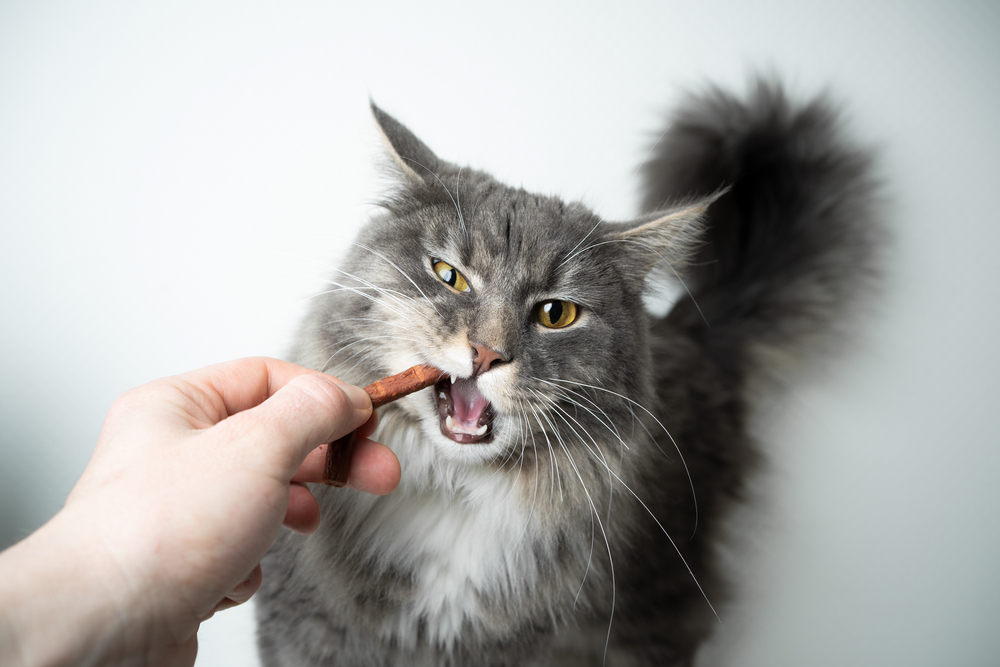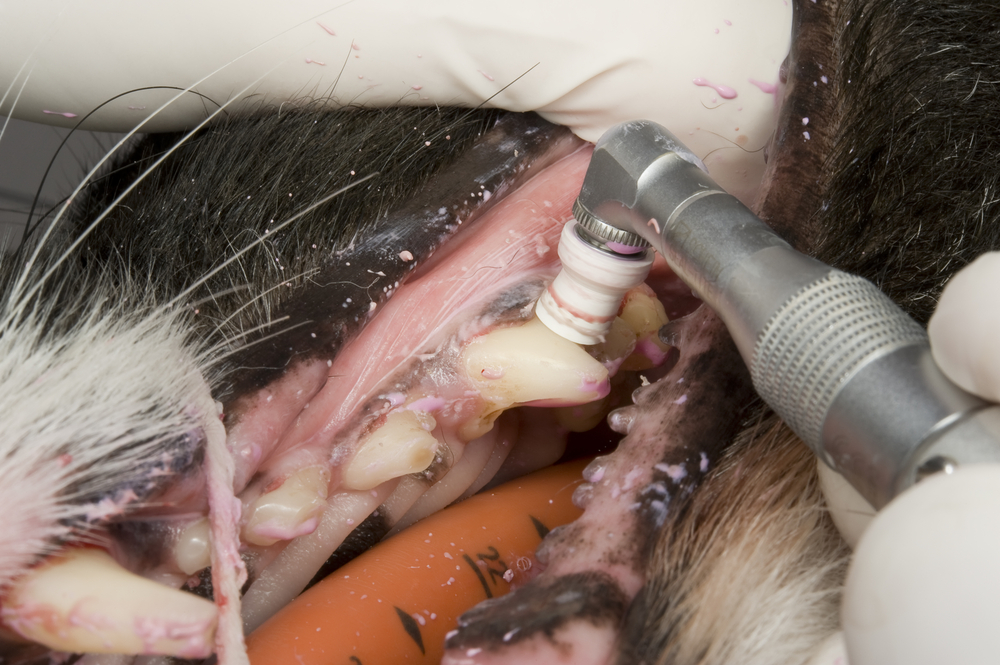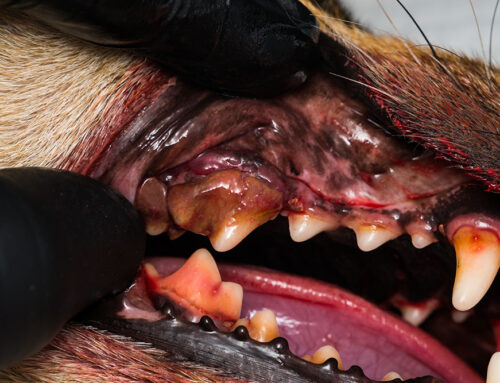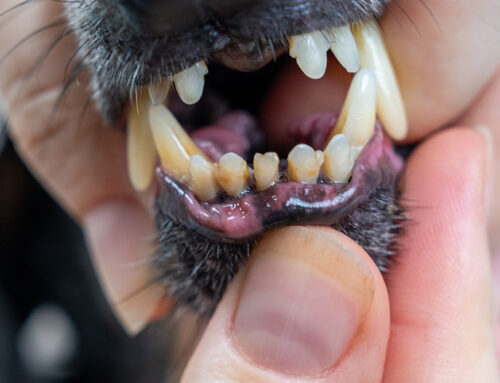To maintain their oral health, cats and dogs need regular professional dental cleanings. While some groomers tout the benefits of anesthesia-free dental cleanings for pets, such services are simply cosmetic procedures that remove visible plaque and tartar without fully evaluating and cleaning the mouth. Follow along with our North Bay Veterinary Dentistry team as we dive deep below the gumline to explain professional dental cleanings for pets.
Before your pet’s professional dental cleaning
Before we evaluate your pet’s oral health and proceed with treatment, our team assesses your four-legged friend’s overall health status. To do this, we perform preanesthetic tests tailored to your pet’s health history, including blood work to assess your furry pal’s organ function and check for anemia, infection, or inflammation.
Based on your pet’s preanesthetic test results, our team formulates an anesthetic protocol that is the safest and most effective for their unique health status. Your pet will undergo a multimodal anesthetic protocol, initially receiving a mixture of relaxants and pain control medications. Once your pet is calm, we place an intravenous (IV) catheter and administer an anesthetic agent to cause unconsciousness. Our team then places an endotracheal (i.e., breathing) tube to protect your pet’s airway and to administer oxygen and gas anesthesia.
Once your pet is fully anesthetized, our highly skilled and trained veterinary professionals use state-of-the-art equipment to monitor your furry pal’s vital signs and anesthetic depth. To ensure your pet remains content, comfortable, and safe throughout their procedure, at least one team member stays with them at all times, from the moment you and your four-legged friend walk through our facility’s doors, until you both leave the clinic.
During your pet’s professional dental cleaning
A great deal of activity takes place during your pet’s professional dental cleaning. A standard professional dental cleaning typically consists of the following:
- Oral health assessment — Once your pet is anesthetized, the veterinary team fully examines your furry pal’s mouth, probing each tooth to check for infection or disease pockets. To determine which areas need treatment, we look under your four-legged friend’s tongue, the roof of their mouth, and all oral cavity tissues.
- Digital imaging — More than half (60%) of your pet’s tooth structure lies below their gingival tissue, making a comprehensive exam and assessment impossible without the aid of digital imaging, because we could miss many periodontal problems that will continue to cause your pet pain and spread infection. Pets with mild dental disease typically only need X-rays to check for below-the-gumline disease. However, a pet who has more serious oral health issues may require advanced imaging such as computed tomography (CT).
- Plaque and tartar removal — Using special hand tools and an ultrasonic scaler, our team eradicates disease-causing plaque and tartar from your pet’s teeth, above and below the gumline.
- Enamel polishing — Because tooth enamel takes a beating as your pet chews durable toys and hard treats, our team polishes this surface smooth to minimize plaque buildup. If we do not smooth away the microabrasions, they become breeding grounds for oral bacteria that eventually cause tooth and bone destruction.
- Dental sealant application — Our team completes your pet’s professional dental cleaning by applying a sealant or fluoride treatment. These dental products strengthen tooth enamel and help prevent future plaque accumulation.
After your pet’s professional dental cleaning

After we have completed your pet’s professional dental cleaning, a team member sits with your furry pal while they recover from anesthesia to ensure they remain comfortable and pain-free. Once your pet is fully aware of their surroundings and able to walk steadily, they can return home with you.
After your pet has recovered from their dental cleaning, initiate or resume their at-home dental care plan, which should include routine toothbrushing and approved dental-care products such as treats, food and water additives, and oral rinses and wipes. When our team provides ongoing regular professional oral exams, we can detect whether your pet’s dental disease is recurring, and our team can schedule a professional dental cleaning before their dental condition becomes severe.
If your pet has no major oral problems, schedule their routine dental cleaning with your primary care veterinarian. As a specialty veterinary dentistry practice, we typically reserve our skills for advanced oral procedures that range from difficult extractions to crown placement. If your pet requires specialized oral health care, schedule an appointment with our North Bay Veterinary Dentistry team.






Leave A Comment